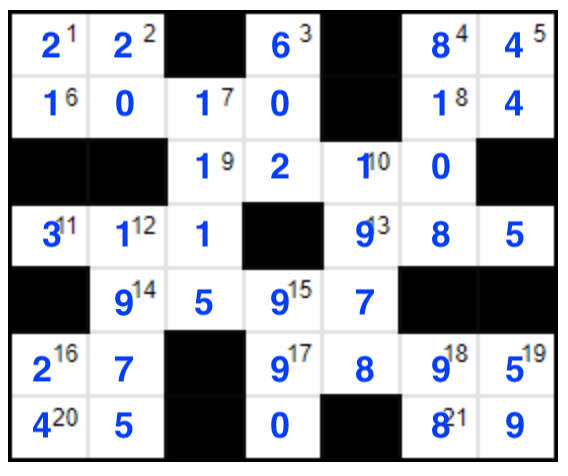This kind of puzzle is from my mom's puzzle magazines. There it is called Figure Logic. It is essentially a crossword, but with math. In crosswords, all words must be real words. In Figure Logic, no numbers can start with 0. (EDIT) Also, all digits 0-9 appear.
XA/D means "X Across/Down". So 1 Across is half of 5 Down. Sorry about this!
Clues
Across
1. 5 down / 2
4. One digit is twice the other
6. 15 down + 20
8. Even
9. One digit is the sum of the others
11. Contains the only occurrence of a digit
13. Odd
14. Divisible by 1D
16. Divisible by 3
17. 5 x 10 down + 5
20. Consecutive digits in some order
21. Consecutive digits in some order
Down
1. Not prime
2. Non-consecutive digits
3. All digits are even
4. A perfect number - 2D
5. Divisible by 11
7. 13 across + 130
10. Living people were born this year
12. 15 down + 13 across
15. 1 across x 20 across
16. Can be written as a factorial
18. 4 across + 8 across
19. Prime
There is a unique solution which can be found without guessing. If you're confused about any definitions, please Google, or comment and I can explain. Also, calculators are allowed and likely required for some of the big numbers.
Any feedback is appreciated.


